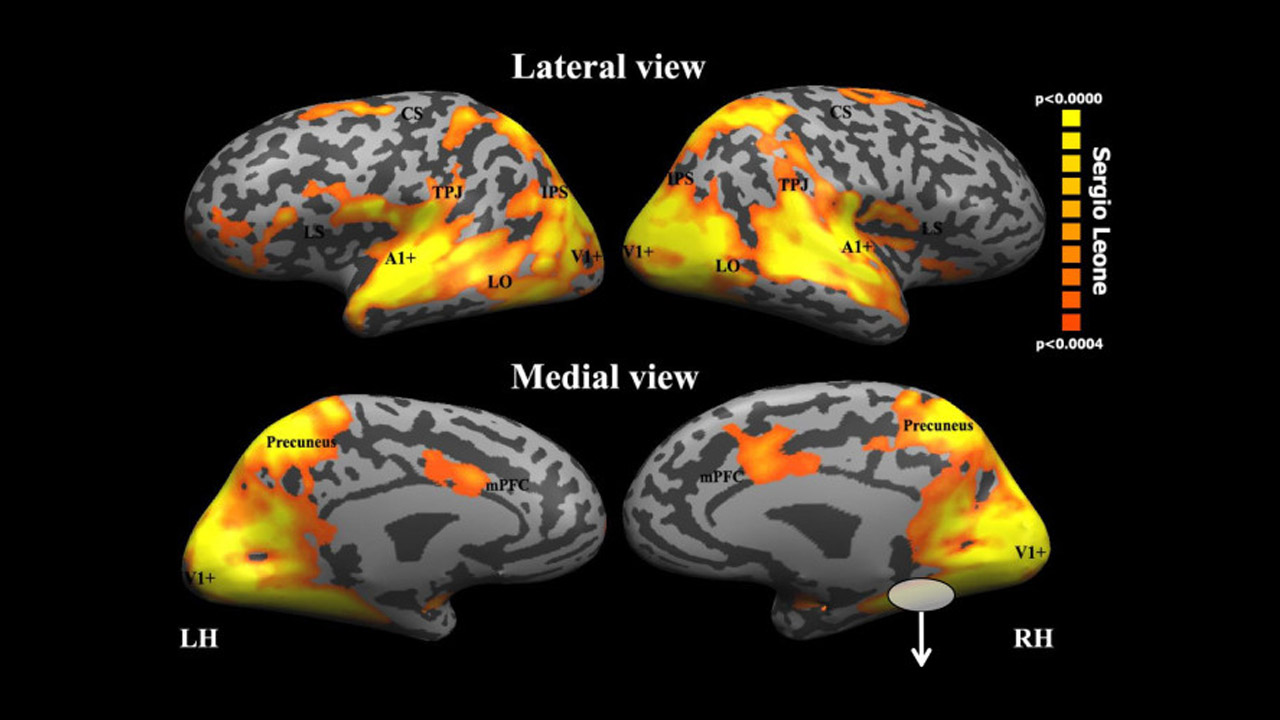Princeton University psychologist Uri Hasson has presented some somewhat curious empirical studies at an event recently hosted by the Academy of Motion Picture Arts and Sciences. His research concludes that certain films stimulate the same parts of the audience members’ brains, “synchronizing” their neural activity. Clips from The Good, the Bad, and the Ugly as well as a scary scene from Darren Aronofsky’s Black Swan in particular stimulated corresponding areas of the viewers’ brains. Wired explains:
The synched up brain regions included the primary auditory and visual cortex, as well as more specialized regions like the fusiform face area, which is important for (you guessed it) identifying faces, Hasson and colleagues reported in the journal Science in 2004.
Because of certain filmic devices such as attention-grabbing cuts and camera angles, that makes sense. But Hasson also assessed that when the audience’s collective brain activity is not synchronized, that means they’ve stopped paying attention, their minds wandering to something else.
Two of the filmmakers who attended the presentation — Jon Favreau and Darren Aronofsky — weren’t really into the idea of fMRI metrics being used to analyze films and the variously complex reactions they could potentially elicit in people.
“It’s a scary tool for the studios to have,” Aronofsky said. “Soon they’ll do test screenings with people in MRIs.” The audience laughed, but it didn’t seem like he was joking, at least not entirely.
Brain scan data used to determine the “quality” of the film in some sort of commercial-success-oriented testing environment? That would never happen… right? (Image: Uri Hasson via Wired)



